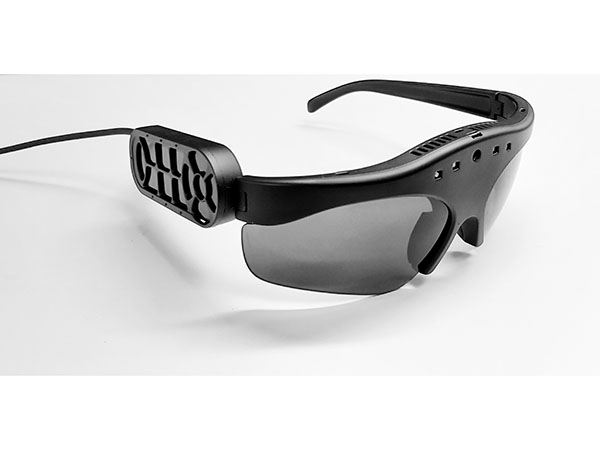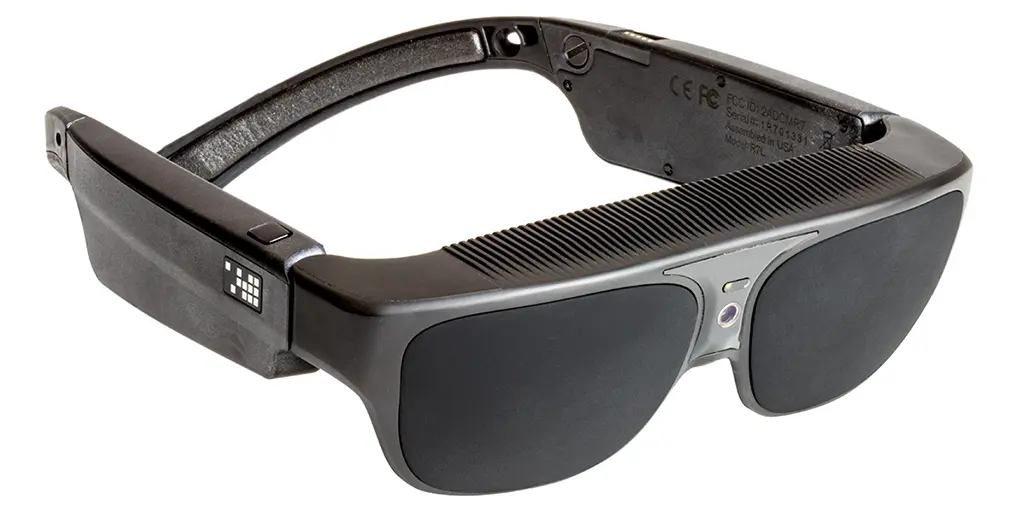Empowering Freedom With Assistive Innovation for the Blind
The integration of assistive modern technology for individuals who are aesthetically damaged or blind represents a significant advancement in fostering self-reliance and enhancing lifestyle. With a series of devices-- from display viewers to cutting-edge responsive devices-- these innovations not just assist in navigation and communication but additionally promote social inclusion and participation in numerous elements of life. As we check out the diverse kinds of assistive tools and their real-world applications, it ends up being clear that the impact is extensive. The evolution of this modern technology elevates important concerns regarding accessibility and future developments that necessitate additional evaluation.
Comprehending Assistive Modern Technology
Although assistive innovation has actually developed substantially for many years, its fundamental purpose remains the same: to enhance the lifestyle for people with handicaps, specifically those that are visually impaired or blind. This technology encompasses a broad variety of tools and tools that assist in self-reliance and capability in everyday activities.
Assistive technology can be classified right into high-tech and low-tech solutions, each designed to fulfill particular needs. Sophisticated gadgets often consist of software application applications, specialized hardware, and flexible tools that make use of innovative innovation to supply support in numerous contexts. On the other hand, low-tech solutions may entail daily items that are changed to enhance accessibility, such as magnifiers or responsive pens.
The assimilation of assistive technology into the lives of people who are blind or aesthetically harmed not only promotes autonomy however likewise cultivates social incorporation and engagement in educational and professional settings. By leveraging these modern technologies, users can navigate their surroundings, access information, and communicate properly, consequently enhancing their general high quality of life. Understanding assistive modern technology is critical for experts, advocates, and caregivers that aim to support people in optimizing their prospective and attaining greater independence.
Types of Assistive Gadgets
Assistive gadgets for the blind and aesthetically damaged are crucial tools that boost daily living by attending to certain difficulties experienced by users. These devices can be generally categorized right into 3 major kinds: optical tools, digital devices, and sensory tools.

Sensory tools, such as Braille display screens and responsive maps, offer different means to receive details. Braille shows transform electronic text right into Braille, enabling individuals to go through touch. Responsive maps provide spatial understanding through increased appearances and lines, enabling much better environmental understanding.
Together, these assistive devices equip individuals with aesthetic impairments to involve even more completely with their environments, promoting better self-reliance and confidence in everyday activities.

Effect On Every Day Life
The assimilation of assistive modern technology into the lives of people who are blind or aesthetically damaged dramatically boosts their ability to communicate and navigate with the world around them. Instruments such as display viewers, Braille shows, and mobile applications assist in access to information, allowing users to involve with digital web content, communicate efficiently, and manage everyday jobs individually.
Additionally, modern technologies like clever glasses and navigation apps give real-time support in strange environments, boosting movement and confidence. These tools make it possible for customers to recognize obstacles, read indications, and also recognize faces, hence cultivating a sense of autonomy in public areas. In addition, home automation systems, which can be controlled via voice commands, look at more info enable people to manage their living settings better, improving comfort and safety and security.
The effect of assistive technology prolongs beyond functional jobs; it promotes social inclusion and psychological health. By linking the gap between people and their environments, these modern technologies empower users to get involved totally in area tasks, go after instructional chances, and participate in significant partnerships. Inevitably, the innovation of assistive innovation is instrumental in redefining the opportunities for individuals that are aesthetically impaired or blind, leading to a much more easily accessible and comprehensive society.
Success Stories and Reviews

Another powerful endorsement originates from Mark, a current university grad who made use of screen analysis software program throughout his scholastic journey. This innovation allowed him to accessibility program materials and participate in conversations, inevitably leading to his successful transition into the workforce. Mark credits assistive modern technology for equipping him to accomplish his job goals, highlighting its duty in leveling the having fun field for individuals with visual problems.
Furthermore, recreation center have reported raised engagement in their programs many thanks to the intro of obtainable electronic systems. These systems have made it easier for individuals to connect, share sources, and support one an additional. These success tales collectively emphasize the profound impact of assistive technology in cultivating self-reliance, enhancing quality of life, and damaging down barriers for the aesthetically impaired and blind area.
Future Patterns in Assistive Tech
Emerging modern technologies are poised to change the landscape of assistive tech for people who are aesthetically damaged or blind. Technologies in man-made intelligence (AI) and artificial intelligence are improving the abilities of tools, enabling even more intuitive individual experiences. For instance, AI-driven applications are progressively able to review and identify things text aloud in real-time, giving customers with important details regarding their environments.
In addition, advancements in wearable technology are developing new chances for freedom. Smart glasses furnished with increased fact attributes can overlay important details onto the customer's field of view, helping with navigating and communication with the setting. The integration of Net of Points (IoT) devices is improving access in wise homes, allowing users to manage home appliances and receive notices via voice commands or tactile user interfaces.
The growth of braille display screens and tactile feedback systems is additionally on the surge, promoting accessibility to digital web content and boosting communication. As these modern technologies read here continue to develop, they guarantee to enhance day-to-day living, educational chances, and employment prospects for people with aesthetic impairments. Continuous collaboration between engineers, individuals, and campaigning for teams will certainly be necessary in making certain these innovations fulfill the demands of the area successfully.
Conclusion
To conclude, assistive modern technology plays a critical duty visit here in improving the self-reliance of people that are blind or visually impaired. By offering crucial devices and sources, these technologies assist in enhanced communication, accessibility, and navigating to details, thereby promoting autonomy and self-confidence. The transformative effect of assistive devices not only advertises efficient communication with the environment however likewise motivates social inclusion and engagement in numerous elements of life, ultimately equipping customers to prosper within their neighborhoods.
The integration of assistive technology for people who are visually impaired or blind represents a significant improvement in fostering freedom and enhancing high quality of life.The assimilation of assistive technology right into the lives of people who are blind or aesthetically harmed not only advertises autonomy however additionally promotes social incorporation and engagement in academic and specialist environments. Inevitably, the advancement of assistive modern technology is instrumental in redefining the opportunities for people who are blind or aesthetically damaged, leading to a much more comprehensive and obtainable culture.
Several people that are visually impaired or blind have shared motivating success stories that highlight the transformative impact of assistive technology on their lives.In conclusion, assistive innovation plays a pivotal function in enhancing the freedom of individuals that are blind or visually damaged.